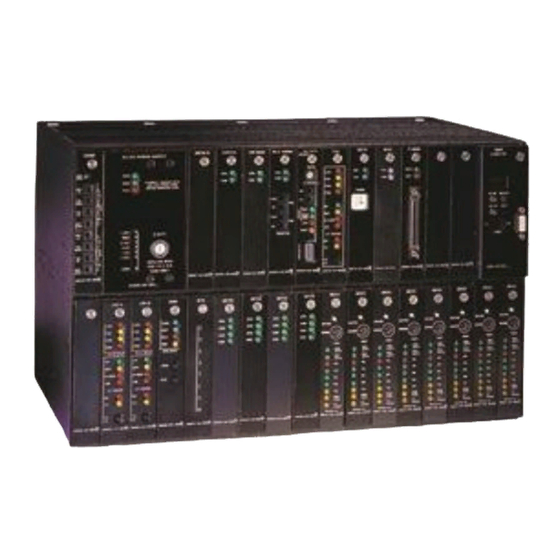
Coastcom D/I Mux III System Manuals
Manuals and User Guides for Coastcom D/I Mux III System. We have 1 Coastcom D/I Mux III System manual available for free PDF download: User Manual
Coastcom D/I Mux III System User Manual (329 pages)
For D/I Mux III Shelf and Common Equipment
Brand: Coastcom
|
Category: Multiplexer
|
Size: 3.8 MB
Table of Contents
-
-
Snmp24
-
Gateway27
-
Maps28
-
Minor Alarm30
-
Bypass30
-
-
Shelves37
-
Line Cards55
-
-
-
Shelves66
-
-
Talk Battery80
-
DC Power80
-
AC Power81
-
-
Event Switch86
-
Power Supply110
-
Cable119
-
-
LO - Logging off144
-
PM - FDL Monitor155
-
Q - Quit Command156
-
-
Test Records181
-
T1 Alarms182
-
Local Alarm182
-
Yellow Alarm182
-
Frame Alarm182
-
B7 Alarm183
-
BPV Alarm183
-
0-DEN Alarm183
-
-
Alarm Contacts183
-
Alarm Dialout184
-
ACO Button184
-
Bypass Button184
-
-
Bypass184
-
Troubleshooting185
-
Defective Units188
-
T1 Interfaces191
-
Loopback Tests199
-
Performance220
-
Alarm Reporting225
-
-
-
Common Equipment233
-
Voice Cards233
-
-
-
Appendix E. Snmp
244 -
-
-
NCC Characters266
-
-
-
Line Noise277
-
Command Timing277
-
-
-
-
AMCU New Screens306
-
Advertisement
Advertisement
